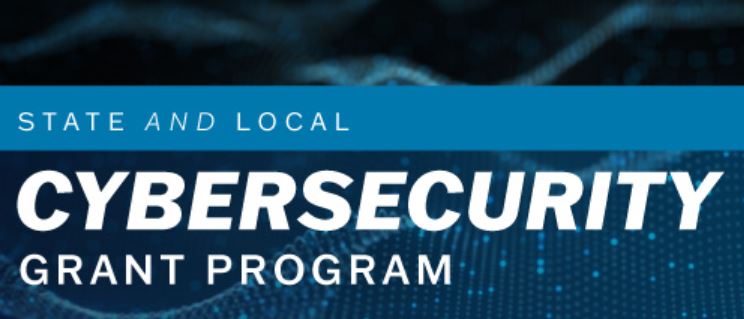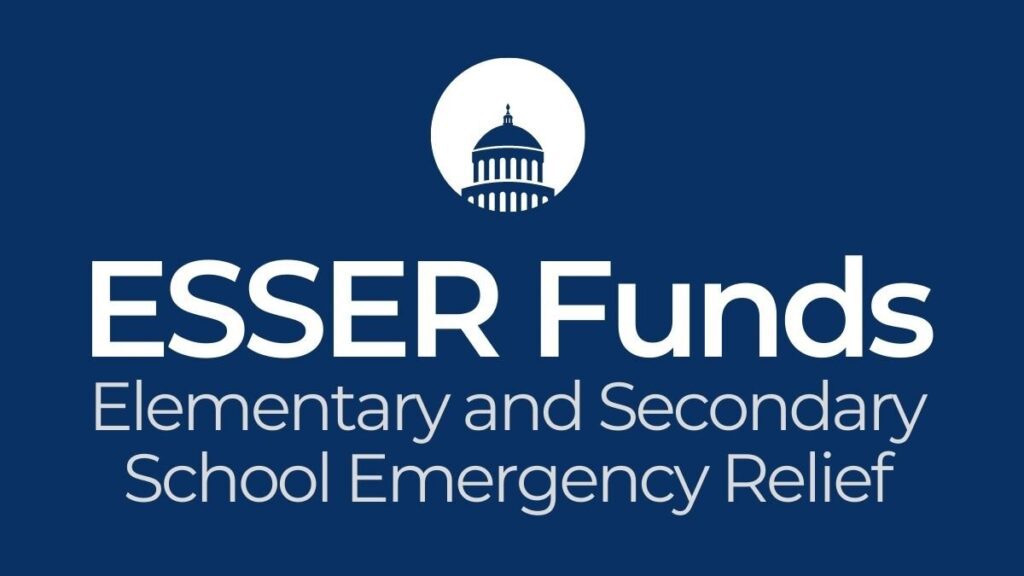Are Cyber Security Grants For Education available to enhance security without straining resources? Yes. This article will examine cybersecurity grants specifically tailored to the education industry. When we reflect on the importance of these ecosystems in safeguarding the learning ecosystem of schools, we can uncover their valuable potential.
Table of Contents
A robust digital defense is unavoidable in a time when education technology dominates. Educators and online learners are concerned about the safety of sensitive educational data and online learning environments. Financial constraints often hamper comprehensive cybersecurity measures in educational institutions, especially K-12 schools.
Explore cybersecurity grants, unravel their essence, and learn how to harness their benefits.
Key Takeaways
- Schools face big challenges keeping student data safe online.
- Special grants can help schools pay for tools and training to fight cyberattacks.
- These grants can help schools hire cybersecurity experts and buy firewalls and other software.
- Teachers can learn how to spot cyber threats and keep students safe online.
- Schools can work together to improve their defenses and share information.
What Are Cybersecurity Grants?
Cyber Security grants help schools improve their defense from cyber threats. The money can be used in many ways:
- Acquiring cyber defense tools like firewalls and intrusion detection systems. These technologies guard against hackers trying to access sensitive data.
- Training students and staff about cyber risks. Awareness programs teach safe online habits. IT experts also get advanced skills to identify and stop attacks.
- Creating cyber rules and response plans. These policies outline secure password practices, data protection, and proper technology use. They also guide how to respond if a cyber incident occurs.
- Assessing cyber weaknesses. Experts can analyze the school’s network and systems to find vulnerabilities. Then they develop strategies to fix those security gaps.
Why apply for Cyber Security grants for Education?
Education has become increasingly complex, increasing cybersecurity urgency. The following are reasons why schools should seek cybersecurity grants-
1. Addressing Staffing Shortages
Schools face a significant challenge in finding qualified cybersecurity professionals. Finding cybersecurity personnel becomes a challenge due to applicant shortages. This gap can be bridged with grants, enabling schools to attract and retain expertise safeguarding sensitive data.
2. Overcoming budget constraints
Budget constraints force schools to allocate limited resources to core educational pursuits, neglecting cybersecurity. Cybercriminals increasingly target vulnerable institutions because they exploit financial limitations.
Investing in cutting-edge information technology, professional development, and education to fortify defenses against emerging threats is made possible through cybersecurity grants, giving a lifeline to those investing in cutting-edge information technology, professional development, and education.
3. Confronting Complexity
Traditional security measures have been rendered inadequate because of digital threats’ dramatic rise. A growing number of cyberattacks focusing primarily on student data have increased in frequency and potency in recent years. It has become increasingly challenging for K -12 institutions to counter these complex attacks with their limited resources because of these complex attacks.
With cybersecurity grants, schools can equip themselves with the right tools and expertise to protect themselves from these multifaceted threats to their digital infrastructures.
4. A holistic solution
Addressing these challenges requires recognizing their interconnectedness. Staff shortages exacerbate tight budgets, and inadequate defenses perpetuate organizations’ vulnerability to complex threats. You can also ease other challenges by tackling one challenge at a time.
A cyber-security grant is a holistic solution to staffing, funding, and complexity issues that can improve the overall security fabric of educational institutions, thereby enhancing staffing, funding, and complexity issues.
List Of Top 12 Cyber Security Grants For Education
It has become increasingly crucial for K-12 schools to navigate the landscape of cybersecurity funding, which includes various grants tailored to their needs in terms of digital defense. These grants financially support educational institutions while strengthening their security postures.
1. State and Local Cybersecurity Grant Program

The State and Local Cybersecurity Grant Program, introduced in 2022 by the Department of Homeland Security, provides schools with a direct avenue to acquire funding to address cybersecurity threats at their schools. This program, operated through state agencies, enables schools to apply for grants to improve cybersecurity measures.
Staff and students can receive cybersecurity training, and advanced threat detection systems can be implemented with these funds. As cybersecurity threats are localized, this grant program ensures schools can tailor their defences to their region’s needs.
2. Homeland Security Grant Program

The program is primarily designed for state administrative agencies to combat terrorist threats. Cyber infrastructure Schools can improve cyber infrastructure enhancement, incident response plans, and robust communication systems through these grants.
Broadened perspectives recognize the interconnected nature of modern threats, acknowledging that cyberattacks can have societal and physical consequences.
3. Proposed Cybersecurity Grants for Schools Act of 2022
Upon enactment of this bill, it will be able to provide financial aid at all levels of education, including elementary and secondary. The organization could use these funds to purchase state-of-the-art firewalls, encryption protocols, and secure authentication systems.
Moreover, this act allows cybersecurity experts or firms to conduct comprehensive risk assessments and develop tailored security strategies to mitigate those risks.
4. E-rate

E-rate, administered by the Federal Communications Commission (FCC), is designed to ensure schools have affordable telecommunications and internet access as part of the E-Rate program. Even though E-Rate funds are not exclusively focused on cybersecurity, schools can use them strategically to enhance their digital defences.
Investing in a secure network infrastructure, strong firewalls, and intrusion detection systems is crucial to safeguard against cyber threats. Identifying attacks before they happen is essential for protecting your valuable data and assets. Take time with your network security – make sure you have the necessary measures to prevent potential breaches.
5. Elementary and Secondary School Emergency Relief Fund

The ESSER fund offers financial assistance to schools to address educational needs posed by the COVID-19 pandemic. As our nation becomes increasingly dependent on remote learning and online collaboration tools, schools can use these funds to address digital security concerns resulting from the rise in remote learning and online collaboration tools.
This could include upgrading virtual classroom platforms, securing video conferencing tools, and ensuring remote learning systems comply with data privacy requirements.
6. American Rescue Plan (ARP) Act of 2021

Several aspects of society, including cybersecurity, have been modernized due to the ARP Act, which allocates substantial funds. Schools can use these funds to invest in cutting-edge cybersecurity hardware and software, conduct a thorough security assessment and implement a multilayered defense strategy based on these investments.
Further, these funds could safeguard critical infrastructure, such as student databases and communication systems, from cyber threats by channeling money into protecting critical infrastructure.
You can also check Grants For High School Diploma Online Instant to pursue your High School Diploma.
7. State and Local Cybersecurity Grant Program (SLCGP)
The State and Local Cybersecurity Grant Program (SLCGP) existed before the LCIP. It provides money to state and local governments for cyber safety projects. The program allows more groups to apply compared to the LCIP. State, local, tribal, and territorial governments can all apply. Also, any nonprofit group that assists eligible groups can apply.
Both programs give money for cyber safety projects. However, the LCIP has a narrower focus on certain eligible groups (mainly state and local governments). It also has different funding priorities that emphasize basic cyber safety measures.
The LCIP has a separate application process run by State Administrative Agencies (SAAs). While the application deadline for this grant ended in 2023, you can sign up for alerts about future opportunities at SchoolSafety.gov.
8. The Local Cybersecurity Grant Program (LCIP)
There is a new program called the Local Cybersecurity Improvement Program (LCIP). It was made by the Cybersecurity and Infrastructure Security Agency (CISA), which is part of the Department of Homeland Security (DHS). The program was created through the State and Local Cybersecurity Grant Program (SLCGP). This program was allowed by the Infrastructure Investment and Jobs Act of 2021.
The goal of the LCIP program is to give money and help to state, local, territorial, and tribal governments in the United States. The help is to make their cybersecurity better and protect them from cyber threats that are getting more difficult. The program wants to help these governments have better cybersecurity.
A total of $1 billion has been set aside for four years. In the 2022 fiscal year, $200 million was available. In the 2023 fiscal year, $400 million was available. This money will help governments improve their cybersecurity.
State, local, tribal, and territorial governments can apply for the LCIP grants. Some nonprofit organizations that help these governments can also apply for the grants. The program wants to fund projects that fix important cybersecurity needs. These needs include putting in place basic cybersecurity measures, making incident response better, and improving cybersecurity skills.
The deadline to apply for this grant was in 2023. But you can sign up to get alerts about future chances at SchoolSafety.gov. This way, you won’t miss the next time the grant is available. The LCIP program is a great way for governments to get help with cybersecurity.
9. Tribal Cybersecurity Grant Program (TCGP)
Tribal Cybersecurity Grant Program (TCGP) helps tribes keep their computers and systems safe. It gives money to make the systems stronger. These systems give important services to tribal members. The 2023 deadline is over. But you can sign up to hear about new chances on SchoolSafety.gov.
10. Homeland Security Grant Program
Homeland Security Grant Program helps state, local, tribal, and land groups get ready for bad things like terror attacks. It gives people what they need to make plans and be safe. The grant lets groups work on being ready for hard times. It helps make sure our country is safe and strong. The time to ask for this grant is over for 2023. But you can get emails about new grants in the future at SchoolSafety.gov.
11. Secure and Trustworthy Cyberspace
Government funds help with research to keep computers and networks secure. Secure and Trustworthy Cyberspace grant comes from the National Science Foundation. It is for colleges and universities in the United States. Both two-year and four-year schools can apply. The deadline for applying has already passed for this year. But you can get alerts about similar opportunities in the future on SchoolSafety.gov.
12. Amazon K12 Cyber Grant Program
Government funds help with research to keep computers and networks secure. Secure and Trustworthy Cyberspace grant comes from the National Science Foundation. It is for colleges and universities in the United States. Both two-year and four-year schools can apply. The deadline for applying has already passed for this year. But you can get alerts about similar opportunities in the future on SchoolSafety.gov.
Benefits of Cyber Security Grants for Education
Schools can improve their security posture with education grants for cybersecurity beyond financial relief. It is crucial to establish a secure and protected learning environment. The grants bestowed upon educational institutions have strengthened them in the face of the ever-evolving threat landscape, empowering them to continue serving the nation.
1. Enhanced Cybersecurity Measures
School administrators can bolster their schools’ cyber security arsenal with the help of Cyber Security grants for Education. As a school, you can protect yourself against cyberattacks by investing in advanced firewalls, intrusion detection systems, and other cutting-edge technologies.
Through a proactive approach, we can safeguard against data breaches and disruptive incidents that might otherwise cause serious financial repercussions for our company.
2. Professional Development Opportunities
Cyber Security grants for Education often come with professional development provisions. This vital aspect equips school staff with the knowledge and skills they need to identify and mitigate potential threats in the classroom. Educators can avoid emerging cyber threats and ensure the vigilant defense of their institutions with enhanced expertise.
3. Endpoint Device Security
Grant-funded initiatives can secure modern education devices. This includes laptops, tablets, and smartphones. The devices on which sensitive information is stored, prime targets for cybercriminals, can now be hardened to prevent breaches and unauthorized access. Schools can curtail attacker entry points by minimizing vulnerabilities in these endpoints, thereby limiting their potential attacks.
4. Vendor Security Audits
It poses a potential risk of security vulnerabilities in educational ecosystems when third-party vendors are integrated. By securing cybersecurity grants, schools can conduct thorough audits of vendor security practices and evaluate them thoroughly.
It is not only a matter of ensuring that all components of the security supply chain are aligned with robust standards. Schools can also minimize risks arising from potential security gaps.
5. Data Privacy Compliance
Adapting to the ever-evolving landscape of data privacy regulations requires a rigorous approach to compliance. Schools can comply with these intricate legal requirements with cybersecurity grants, which provide funds for these purposes.
With the right staff and technology in place, schools can navigate the complex regulatory environment quickly and without compromising the integrity of student and staff data. In addition, they can implement cutting-edge data protection technologies.
Applying for Cyber Security Grants for Education
If you apply for Cyber Security grants for Education, your school can strengthen its digital defenses and increase its digital security. Although preconceptions about the process suggest it is difficult, it can be handled carefully. The federal or state education departments usually oversee cybersecurity grants.
To be eligible for a cybersecurity grant, your school must demonstrate eligibility, provide meticulous documentation, and be committed to aligning its goals and objectives with the grant.
1. Confirm Eligibility Criteria
As a first step in the application process, you must ensure that your school meets the requirements for the specific grants you intend to apply for before moving forward. A particular grant, such as the State and Local Cybersecurity Grant Program or the proposed Cybersecurity Grants for Schools Act of 2022, may have unique criteria.
2. Begin the Application Process
Applications can be initiated once your school has been determined eligible. You must submit an initial document outlining your school’s goals and needs regarding cybersecurity. By taking this crucial step, you can provide evaluators with a clearer picture of your objectives and aspirations regarding improving cybersecurity.
3. Develop a Comprehensive Cybersecurity Grant Proposal
Most grant programs require cybersecurity grant proposals to be considered for funding. You will find in this proposal an overview of the current cybersecurity posture of your school. You will also find the methodology used for assessing risks and the specific cybersecurity project objectives you intend to achieve as part of the project.
An excellent proposal will demonstrate your school’s commitment to digital security and strategic approach to protecting data.
4. Evaluation and assessment
When a grant proposal and accompanying documentation are received, the evaluators will meticulously review them to determine if they are worthy of funding. They will assess your proposal to determine whether it aligns with the grant’s overall objectives. Your submission will also be evaluated for its completeness and adherence to the grant and program guidelines.
5. Approval and Award
Upon completing the evaluation process, successful applicants receive approval from their state’s education department and funding for their program. It takes 6 months to 12 months after application submission. The complexity and volume of applications we receive are considered, and the specifics of the evaluation process.
Maximizing use of Cyber Security Grants for Education
To ensure optimal use of allocated cybersecurity funds, a strategic approach must be taken to harness the full potential of a cybersecurity grant. Schools can elevate their cybersecurity measures by incorporating meticulous planning, efficient vendor management, and strategic community partnerships. Your cybersecurity grant’s impact can be maximized by-
1. Develop a Comprehensive Cybersecurity Plan
Effective grant utilization begins with a well-structured cybersecurity plan. Start by identifying your school’s most critical cybersecurity needs. Establish clear goals and objectives, outlining the specific actions required. Define the necessary resources- advanced security tools, staff training, or infrastructure upgrades. A meticulously crafted plan will serve as a roadmap, keeping your efforts organized, aligned, and results-focused.
2. Vendor Selection and Management
When selecting cybersecurity vendors, conduct thorough research and evaluation. Choosing vendors whose offerings align closely with your school’s unique requirements will help you make the right decision. Establish clear communication channels when a vendor is chosen so that expectations can be set and met.
Make sure you keep a close eye on their performance to ensure that they fulfill their promises. This will enable them to address your cybersecurity needs as effectively as possible. Successful grant utilization depends on accountability and collaboration between grant recipients and selected vendors.
3. Forge Community Partnerships
A great way to maximize the impact of your cybersecurity grant is to collaborate with neighboring schools and organizations to maximize its impact. Pooling resources, sharing insights, and exchanging best practices are crucial to enhancing your collective defense significantly.
It would help if you took action to strengthen your defense; these measures are essential to achieving that goal. Implementing this is crucial in constructing a more robust and more efficient system of collective defense. You can improve your cybersecurity posture by developing relationships with local businesses and law enforcement agencies and utilizing their expertise.
4. Vigilant compliance monitoring
Maintaining the integrity of a project depends on the grant compliance. Make sure you are familiar with the reporting requirements stipulated by the grant. In addition, appoint designated persons who will ensure timely and accurate submissions.
You should regularly review the compliance status of your school and its performance against the grant benchmarks. Effective resource management and alignment with grant requirements is only possible with a proactive approach.
Frequently Asked Questions
1. What are Cybersecurity Grants for Education?
Schools, colleges, and universities can apply for cybersecurity grants to improve security measures and raise awareness.
2. Why are these grants significant?
As a result of these grants, educational institutions and individuals can improve their cyber security infrastructure. They can also protect sensitive data, and prepare the next generation with essential skills to navigate the future cyber security landscape.
3. Who can apply for Cyber Security Grants for Education?
Applicants can apply for these grants whether they are educational institutions, such as K-12 schools, universities, community colleges, or vocational schools.
4. What can grant funds be used for?
Using grant funds for various purposes, such as investing in advanced technologies, providing cybersecurity training programs, conducting workshops, improving network security, or developing educational materials, including promoting cybersecurity, is possible.
5. Will the government pay me to learn cyber security?
The CyberCorps program gives money to students who study cyber safety. They go to schools that teach about keeping data safe. Students learn cool stuff like how computers think and space tech. They get to make the Internet a better place.
6. How do I get an education in cyber security?
Many people who want jobs in cybersecurity learn new skills in classes or on their own. Bootcamps and school programs can help people get ready to earn certificates from groups like CompTIA or ISACA. These show employers the skills a person knows. By earning these, workers prove their understanding of key topics like network defense.
7. What is a cyber grant?
The money from the State and Local Cybersecurity Grant Program helps groups protect their computer systems. It gives funds to state and local governments. It also gives funds to Tribal governments. The funds help these groups keep their computer systems safe. They help protect the systems from cyber threats and risks.
Conclusion
In light of increasing security challenges, cybersecurity grants provide a vital lifeline to K-12 schools struggling to cope with them. Through these grants, cyber security measures are improved, professional development is fostered, and regulatory adherence is ensured. Schools can strengthen their defenses and create safer digital learning environments for students and staff by tapping into various funding options.












Add Comment